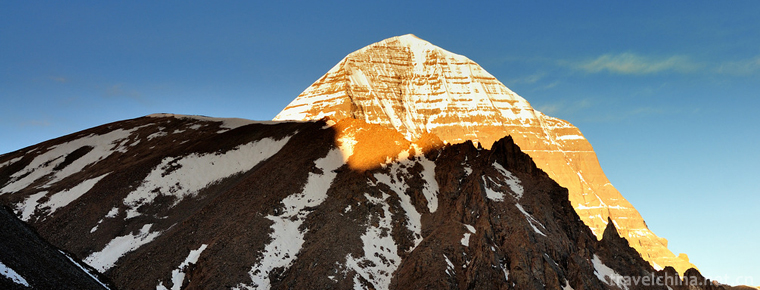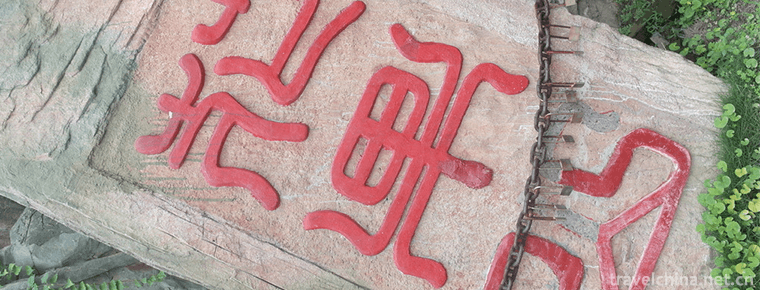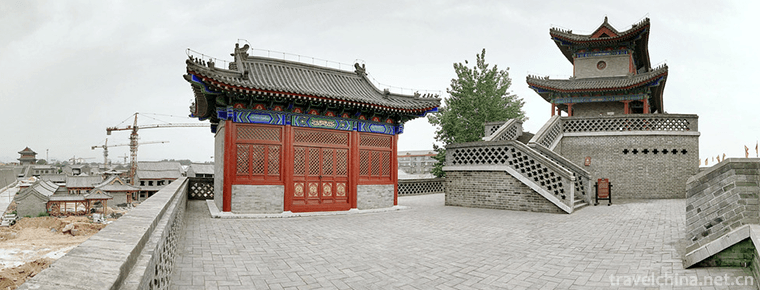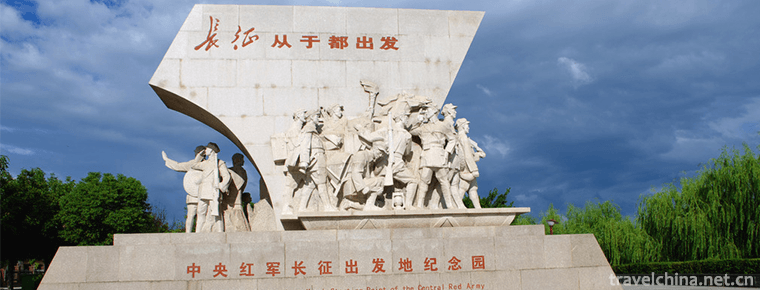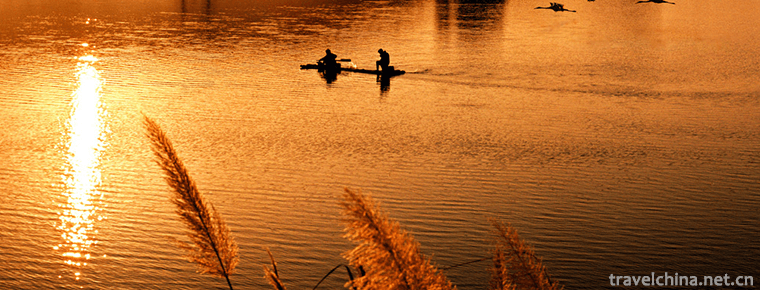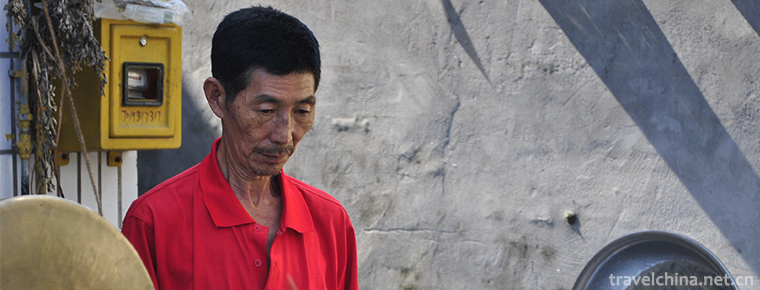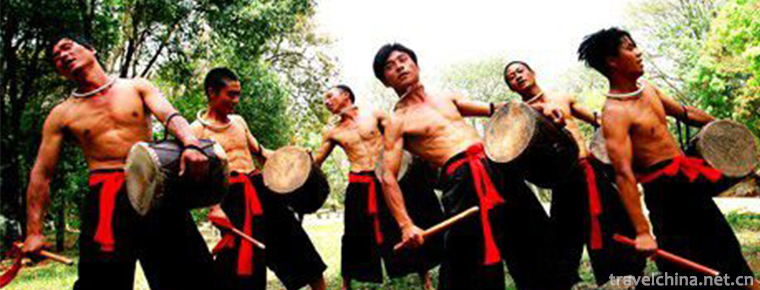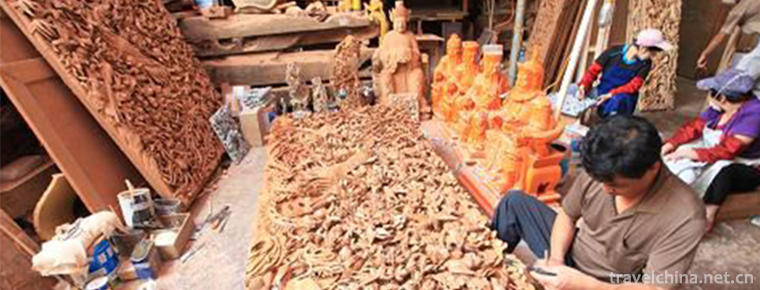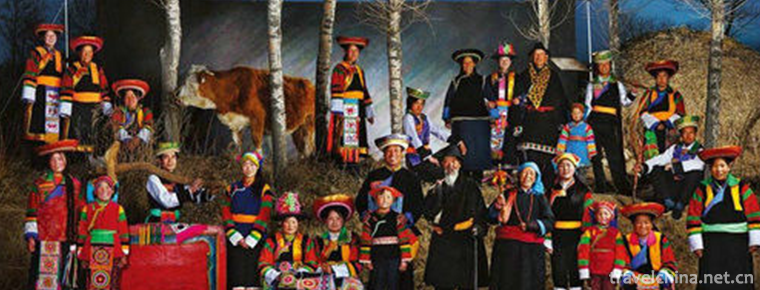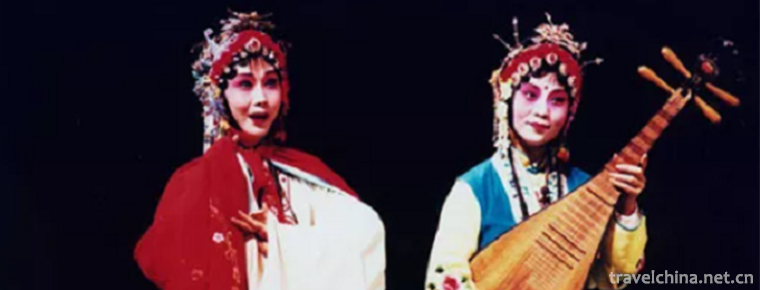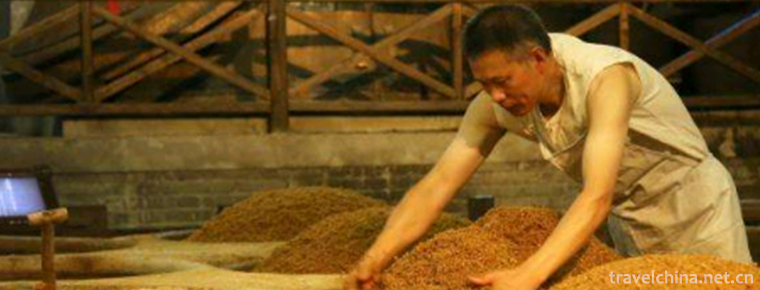Miao Flower Jumping Festival
Miao Flower Jumping Festival
Flower Dancing Festival is a traditional festival of the Miao people in Anshun. Legend has it that Yang Lu, a hero of the Miao people, rose up. Till now, Huashan, outside the North Gate of Anshun, is still named after it.
On June 7, 2008, the Festival was approved by the State Council and listed in the second batch of national intangible cultural heritage list.
Brief introduction of festivals
Flower Dancing Festival is the most solemn and longest traditional festival of Anshun Miao people. Legend is the rise of Miao hero Yang Lu. Tiaohua Mountain outside the North Gate of Anshun is still named after him. The word "jumping flower" is still a Chinese name. It is named for the flower trees planted on the slopes. It has different meanings from Miao language. Miao language calls jumping flower "Oudao" and means "catching up with the slopes". Flower jumping dates are all held during the first month of the lunar calendar. There are still 24 fixed flower jumping slopes. During the festival, Miao people, especially young men and women, wear Festival dresses. Unmarried men wear more than a dozen beds or even dozens of exquisite fans on their backs. If women do not find a target, they can invite brothers to replace them. Women wrap up silver bells, silver beads, silver chains and other decorations with parcels. Men's song Blowing dance, women's bells and handkerchiefs dance together, dancing around the flowers and trees. There are flower pole climbing competitions, shooting crossbows, needle and thread skills, martial arts performances, cattle pouring, bullfighting and other sports activities.
Flower jumping dates are three days per flower slope. On the first day of planting flowers and trees, the Miao family made preparations for seeing them in the distance. The next morning, they went to the empty village. On the third day, after the flower jumping, the guests stayed near the Miao village for food and lodging, drinking, playing with strings and playing with joy. Flower trees were sent from Zhai Lao to the home of long-term sterile people. The sterile people were delighted to have dinner with their guests. Young men and women take this opportunity to choose their spouses and old people play the flute to celebrate the festival. Nowadays, Flower Dancing Festival has become a grand festival for people of all nationalities. At that time, in Anshun City, nearby villages flocked to it.
Festival activities
"April 8th" is an important traditional festival of Miao people, also known as "Yanu Festival". In 2011, it was selected as the third batch of national intangible cultural heritage list. Fenghuang County has a strong national flavor. Every year on April 8th of the lunar calendar, the Miao people in this county wear national costumes, sing folk songs, dance Miao family, and celebrate their traditional festivals. Nowadays, April 8th in Phoenix has become a carnival festival for Miao, Tujia and Han nationalities in Phoenix County and its vicinity. It has become the grandest ancestor worship festival, heroic Festival and Carnival of Miao compatriots, which contains profound national spirit and culture. Young men and women of all nationalities also take this opportunity to find their beloved through their passionate dancing and singing, "April 8th" is also known as "Eastern Valentine's Day".
For Yang Lupo ("Yang Lou Island"), "Europe Island" ("Dancing Flowers") is the Miao people's name for their own national festivals. In addition, it is also the name or general name of all the cultural and entertainment performances that Miao people do on their own festivals. For example, when people dance or sing folk songs or play Lusheng on festivals, they can be said to be in "Europe Island" ("Dancing Flowers"). "Tiaohua" is actually a Chinese name for Miao's "Euro Island" by the Han or Miao nationalities. It is named after the flowers and trees planted on the slopes, which has different meanings from Miao. Because many non-Miao and even Miao people in China only know "jumping flower" but not "European island", and use "jumping flower" instead of "European island".
Flower jumping dates are all held during the first month of the lunar calendar. There are still 24 fixed flower jumping slopes. Flower jumping dates are three days per flower slope. On the first day of planting flowers and trees, the Miao family made preparations for seeing flowers and trees. The next morning, they went to the empty village. On the third day, when the flower jumping ended, the guests stayed near the Miao village for food and lodging, drinking, playing with strings and playing with joy, and stayed up all night. Flower trees were sent from Zhai Lao to the home of long-term sterile people. The sterile people were delighted to have dinner with their guests. Young men and women take this opportunity to choose their spouses and old people play the flute to celebrate the festival.
On May 6, 2014, at 10:18, the "April 8" Flower Jumping Festival of the Miao Nationality in Phoenix, China opened in the Tuojiang Xueqiao section of the ancient city area of the county. The two-day event is divided into three chapters: Tongle "April 8", Passion "April 8" and Carol "April 8". Among them, the Miao people in Fenghuang County, Hunan Province and the Lukai people in Pingdong County, Taiwan, perform ethnic customs on the water stage of the Tuojiang River and jointly play a new chapter in cultural exchanges between ethnic minorities across the Taiwan Strait.
Source of Festival
Some people believe that the Miao Flower Dancing Festival is still a Chinese name, Miao language said that "Flower Dancing" is "Oudao", meaning "to catch up with the slope". This statement is obviously inappropriate, because in fact, the Chinese term "European Island" is "jumping flowers". Take the name of a mobile phone brand as an example. You can't say "Nokia" in English as "Nokia", because in fact it is Chinese as "Nokia". In addition, it is also wrong to interpret "Europe Island" as "catching up with the slopes", and such an interpretation would mislead people to think that "jumping flowers" means "catching up with the slopes", which would add to the mistake. Maybe someone translated the homonym of "Europa" into Chinese, which is not suitable for the translation of Miao into Chinese. To put it further, if it is not to be translated in that way, it should also be translated as "rolling slope" or "reversing slope". Why do some people interpret "Oudao" as "catching up with the slope" (which should be "rolling slope" or "reversing slope")? The reason is very simple, but the Miao homonym corresponding to "rolling slope" or "reversing slope" is the same as "Europa" ("jumping flower"), which means completely different. Take the word "ah wall" ("friend") for example. The corresponding word of "ah wall" ("friend") in Chinese is "friend". According to the homonym of "ah wall" ("friend"), the Chinese translation of "ah wall" ("friend") is "tree" root", which is obviously wrong.
Inheritance significance
Zhijin is a multi-ethnic county, with the exception of the Han nationality, the Miao population is the first among the minority nationalities. The villages and towns where the Miao people live more centrally are mainly Zhuzang, Longchang, Santang, Agong, Guanzhai, Cat Farm, Chengguan and so on. Generally, they live in villages.
Like other nationalities, the Miao people have their own festivals. Flower-jumping Festival is a festival with unique traditional culture and national customs. Miao Flower Jumping Festival is the general name of "Flower Jumping Slope" and "Flower Jumping Field" of Miao nationality. The Miao Flower Jumping Festival in Zhijin County varies in time and location. Due to historical and natural reasons, the Miao ancestors of Zhijin County migrated to Zhijin in the relentless struggle against various natural disasters and man-made disasters. With their wisdom and strength, they have overcome numerous difficulties, pioneered and built their homes, and created valuable culture, art and unique production and lifestyle. Due to the dispersed living environment and inconvenience of interconnection, in order to exchange information, support each other, unite to overcome various difficulties and resist the enemy, various gatherings will be held at a certain time and place. Over time, rules have been formed in life, so the festivals of "Huapo" and "Huachang" have been inherited from this historical form of gathering. Therefore, these festivals are inseparable from the special background of Miao people's history and living environment. These "flower slopes" and "flower farms" have their own historical reasons for their formation. Generally speaking, some are held to commemorate the pioneering work and the construction of homes; some are formed to commemorate the leaders in distress; some are to commemorate the beautiful and tortuous love tragedies of young Miao men and women; and some are to pray for the protection of ancestors and gods for the prosperity of their own nation's descendants. Whatever the cause, it is no longer the original single purpose and content. Generally speaking, most of them have evolved into multi-form and multi-content festive gatherings, economic exchanges, emotional exchanges, gathering and entertainment, as well as opportunities and places for young Miao men and women to get to know each other and find objects.
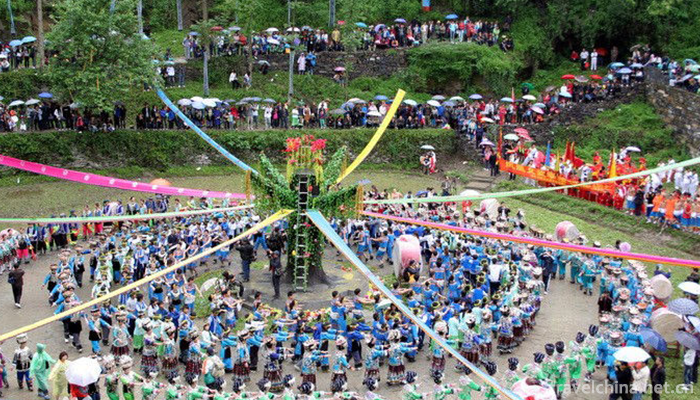
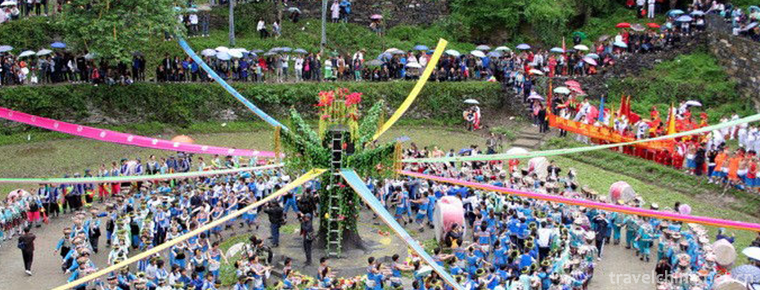
Miao Flower Jumping Festival
-
KangrinboqeMount Kailash
Views: 264 Time 2018-10-12 -
MountHuaguoshan
Mount Huaguoshan (Lianyungang Huaguoshan Scenic Area) is located at the middle foot of Nanyuntai Mountain in Lianyungang City.
Views: 303 Time 2018-12-06 -
The ancient city of Qingzhou
Qingzhou ancient city is one of the ancient nine states. It has a history of more than 7,000 years, a history of civilization of more than 5,000 years
Views: 236 Time 2018-12-08 -
Hongjundu Xiwudang Mountain Scenic Area
Hongjundu Xiwudang Mountain Scenic Area is the starting point of the Long March of the Four Red Armies, the memorial site of the Campaign of Strong Crossing Jialingjiang River, the national patriotic
Views: 92 Time 2019-01-16 -
Poyang Lake National Nature Reserve
Jiangxi Poyang Lake National Nature Reserve is located in the north of Jiangxi Province. It is a nature reserve for wildlife protection. The main protected objects are rare migratory
Views: 213 Time 2019-02-07 -
Liang Pings Gong and drum
Liangping Gong and drum is a kind of traditional folk instrumental music spread in Liangping District of Chongqing. In Liangping, the predecessors said that "Shu people Chao shan, gongs and drums
Views: 310 Time 2019-05-13 -
Drum dance
Hani rhythm and drum dance is a kind of sacrificial dance of Hani people on the traditional festival "Onmatu". The dance is vigorous and bold, vigorous, simple and free, showing the same per
Views: 72 Time 2019-05-23 -
Wood carving
Wood sculpture is a kind of sculpture, which is often called "folk craft" in our country. Wood carving can be divided into three categories: solid round carving, root carving and relief carv
Views: 140 Time 2019-06-06 -
Qijia Yanxi
"Qijia Yanxi" is a long narrative poem in Tu folk literature. It records the eleventh generation of Qi Tusi Chief Qi Yanxi in the history of Tu people, despite his old age and physical decli
Views: 202 Time 2019-06-10 -
Soviet Opera
Su Opera is a combination of Huagu Tanhuang, Nanci and Kunqu Opera. It is popular in the urban and rural areas of southern Jiangsu and Northern Zhejiang. Its predecessor, Sutan, was originally called
Views: 90 Time 2019-06-16 -
Brewing Techniques of Zhenjiang Hengshun Fragrant Vinegar
Zhenjiang Hengshun aromatic vinegar brewing technology production chooses high-quality glutinous rice produced in the "land of fish and rice" as raw material, using solid-state layered ferme
Views: 120 Time 2019-07-25 -
Catering and shopping in Chengdu Giant Panda Base
Chengdu Research Base of giant panda breeding has four souvenir shops: "original fashion gift shop of giant panda sun delivery room", "gift shop of giant panda cub playground", "museum gift shop" and "charm theater gift house". The wooden house structure and
Views: 130 Time 2020-12-13
